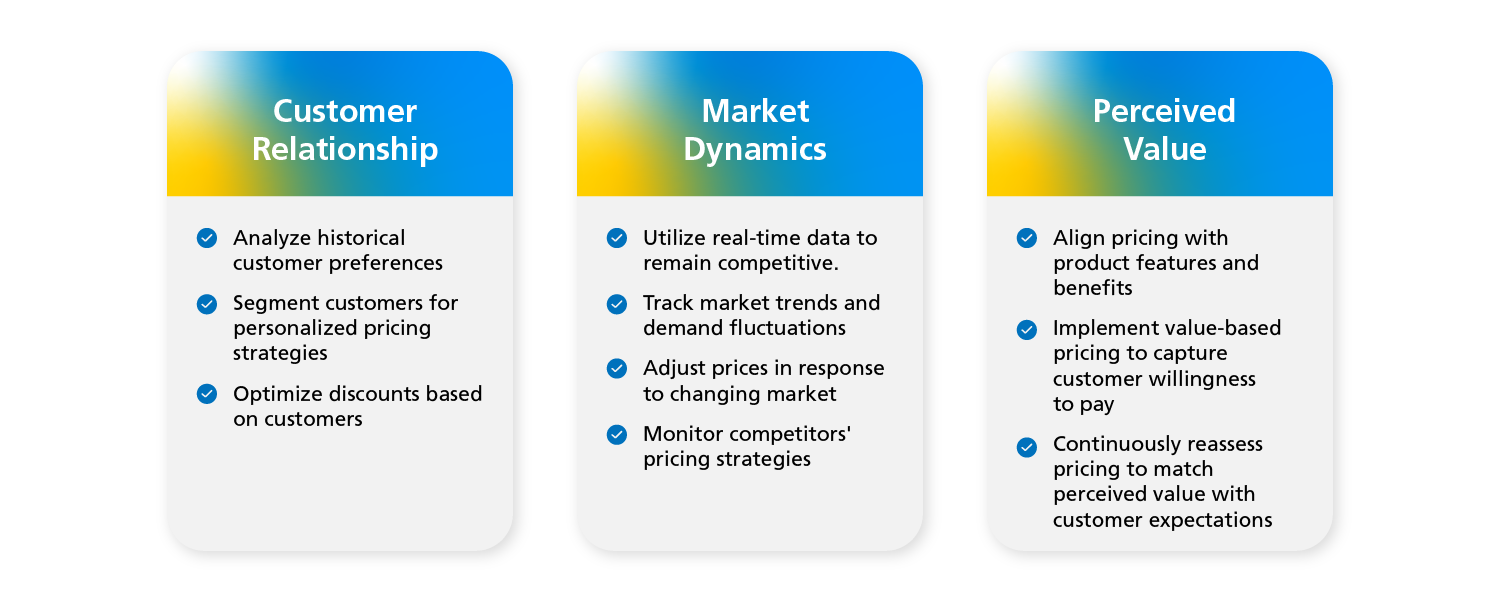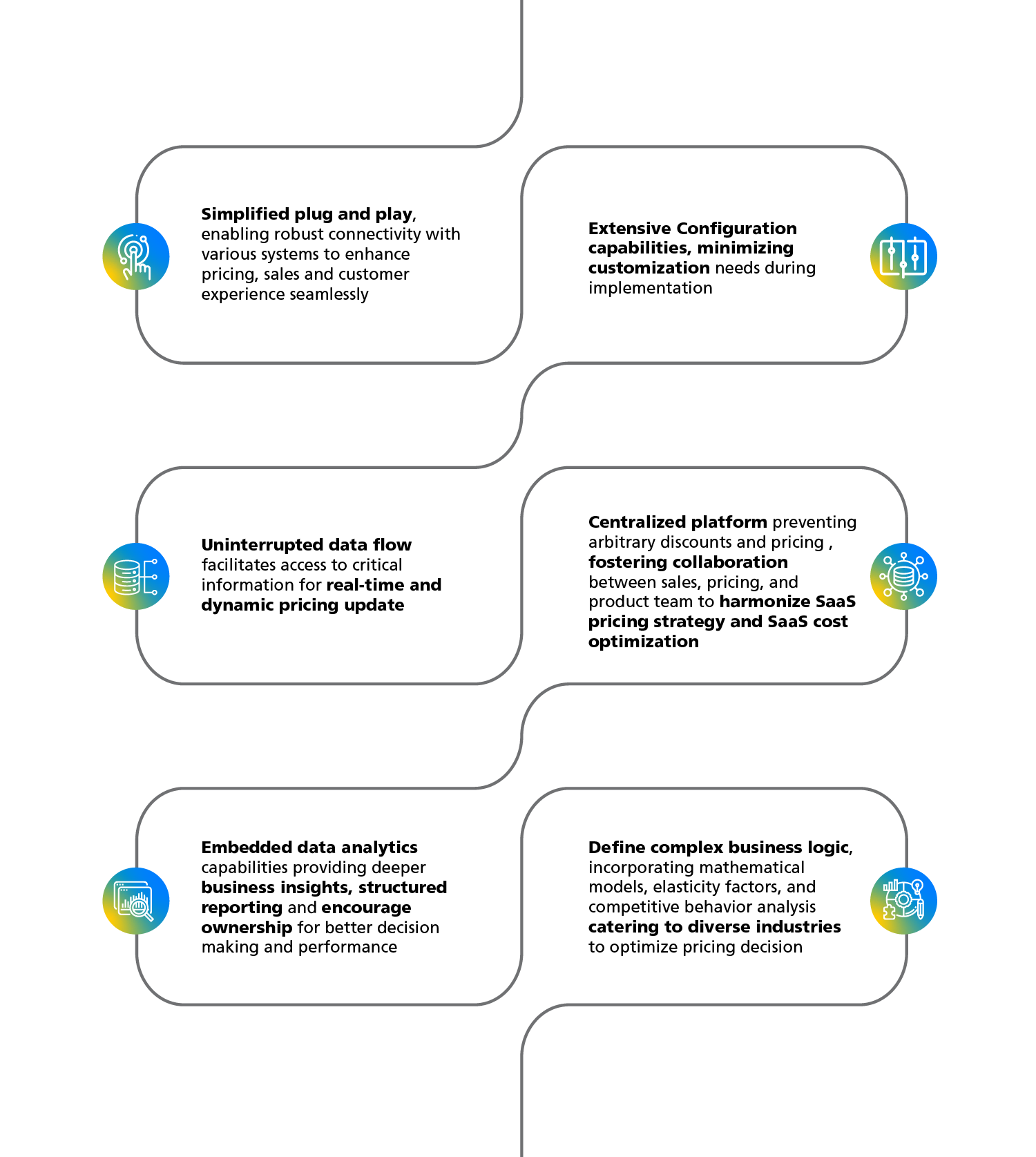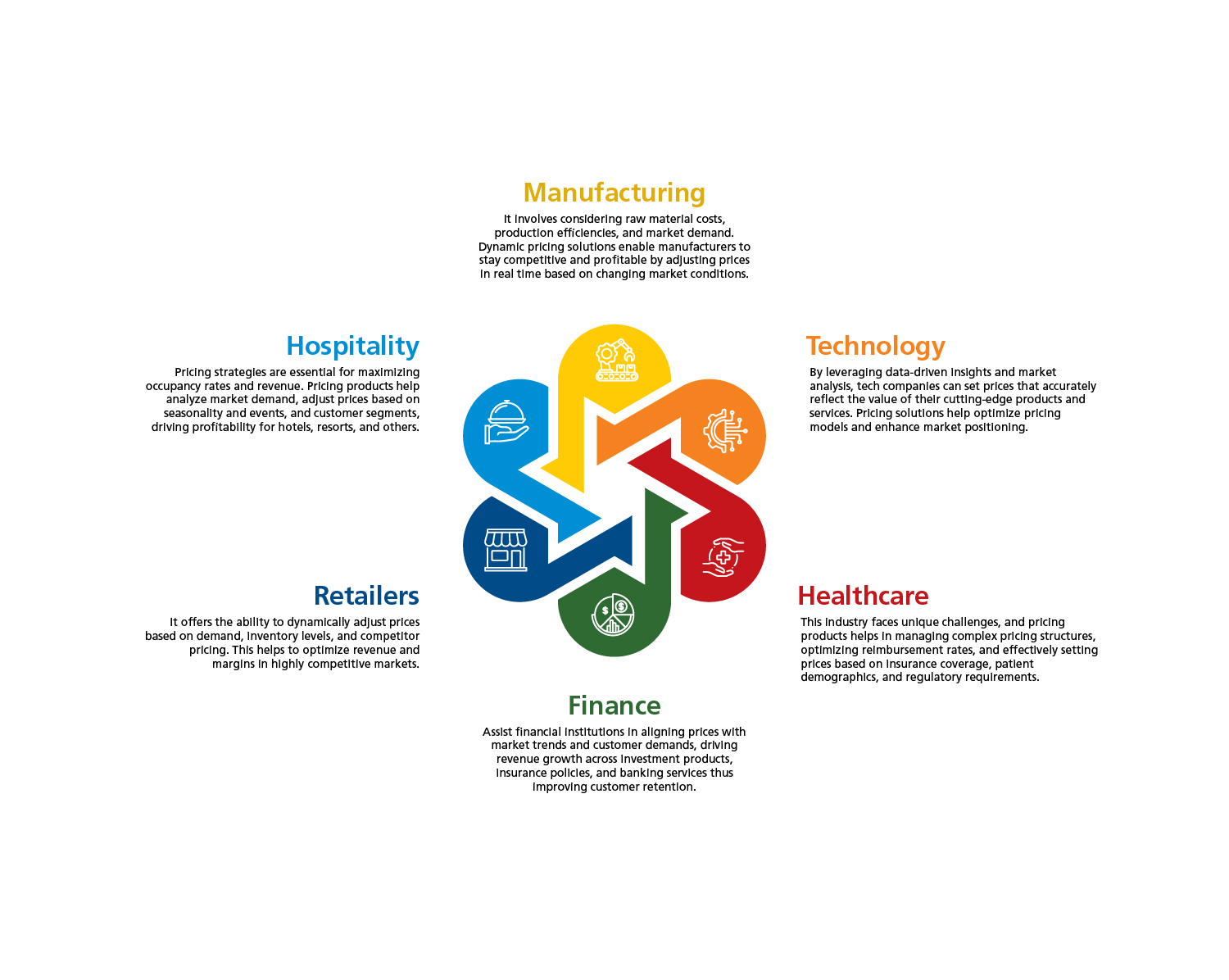Optimizing Pricing Strategies through Cloud SaaS Solution: Overcoming Challenges Across Industries
Introduction
The business landscape is highly competitive, characterized by factors such as strong competitors, aggressive pricing strategies, the need for constant innovation, low barriers to entry, and disruptive tactics. In this environment, winning new bids, onboarding, and retaining customers has become increasingly challenging. However, even with overall efforts and business objectives in place, success can be elusive if pricing strategies are not executed effectively.
At its core, pricing assigns value to a product and service, considering various factors such as raw material costs, overheads, market conditions, and perceived value. It significantly impacts buying decisions, as customers continuously evaluate product value, competitive positioning, and brand image. Fair and transparent pricing fosters loyalty and simplified decision-making for the customer. By combining effective pricing strategies and technology-driven approaches, companies can achieve a revenue increase of 100-300 basis points and a profit margin uplift of 10-20%. Therefore, price optimization becomes a core objective and a primary driver for organizations to establish a solid foundation. It should reflect –

The correct pricing approach can alleviate tensions within product, pricing, and sales teams, facilitate better decision-making for sales representatives, and reduce quote turnaround time.
Challenges
Before developing a coherent pricing strategy, it is crucial to conduct a thorough root cause analysis to identify pain points and challenges associated with it:
- Missing product value relationship: Failing to dynamically incorporate factors like raw material costs, overheads, regional attributes, market conditions, and past performance results in outdated price points.
- Incomplete cost-aligned pricing: A matrix system that aligns customers with multiple product lines often lacks data granularity and insights. Sales representatives may assign customers to more favorable price tiers, compromising data consistency.
- Irrelevant discounts: Businesses offer customer-specific discounts that do not align with market standards. Long-term contracts with critical customers make it challenging to track and implement changes to contract terms, resulting in revenue leakage.
- Inconsistent pricing: Varying product prices across branches or sales reps creates misalignment with the market. This affects the go-to-market strategy and bid-win rates.
Other factors contributing to pricing challenges include:
- Lack of defined pricing goals, not considering factors like product segmentation, business cycle, and organizational structure
- Customized pricing strategies that dilute brand value and premium offerings
- Complicated pricing tiers that confuse buyers and diminish interest
- Artificially inflating prices and later offering deep discounts, eroding trust
If these challenges are left unaddressed, they can amplify and complicate day-to-day business activities, such as team collaboration, data collection, product innovation, budgeting estimates, sales, and marketing. However, practical SaaS cost optimization steps in to analyze infrastructure, allocate resources better, and improve operations. This boosts profit margins and gives a competitive edge in the ever-changing market.
Common Pricing Strategies
To tackle these pain points, firms seek a targeted and practical approach that aligns with business objectives and market dynamics using cloud platforms. Here are some widely used SaaS pricing strategies:
- Cost-plus pricing: Setting prices by adding a markup to the cost of production ensures profitability but may not account for market demand.
- Value-based pricing: This strategy determines prices based on the customer’s perceived product or service value. It aligns pricing with the benefits offered.
- Dynamic pricing: This strategy adjusts prices in real-time based on factors such as demand, inventory levels, and competitor pricing. It is particularly effective in industries with rapidly changing market conditions.
- Penetration pricing: Setting initially low prices to quickly gain market share. Over time, prices may be increased as the product establishes itself.
- Skimming pricing: Setting high initial prices to maximize profit from the early adopters of a product or service. Prices are gradually lowered to attract a broader customer base.
Optimizing Pricing with Cloud SaaS Solutions
Cloud SaaS-based dynamic pricing products are highly recommended as they offer robust integration capabilities and easy and cost-effective implementation, requiring no hardware setup or maintenance. They ensure seamless updates and scalability, accommodating business growth. A successful SaaS pricing strategy balances value proposition and affordability, catering to diverse customer segments while providing sustainable revenue growth.

Widespread Industry Application
Cloud SaaS-based products are versatile and well-equipped to cater to various industries, addressing the specific pricing needs for better performance and revenue growth.

Conclusion
Pricing plays a pivotal role in determining the success of businesses across diverse industries. Overcoming challenges related to pricing requires a well-thought-out strategy that addresses pain points and leverages technology-driven solutions. At LTIMindtree, we combine decades of expertise and deep industry insights with a proven pricing engine to drive revenue and profit growth. vii We are committed to helping you decode pricing challenges and find practical solutions.
Latest Blogs
Introduction What if training powerful AI models didn’t have to be slow, expensive, or data-hungry?…
Pharmaceutical marketing has evolved significantly with digital platforms, but strict regulations…
Leveraging the right cloud technology with appropriate strategies can lead to significant cost…
Introduction The financial industry drives the global economy, but its exposure to risks has…




